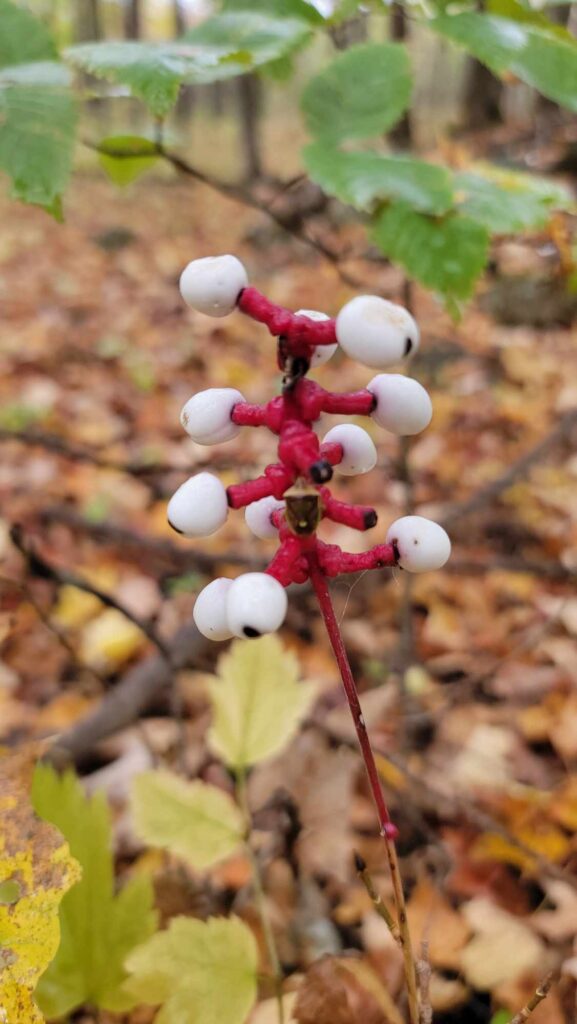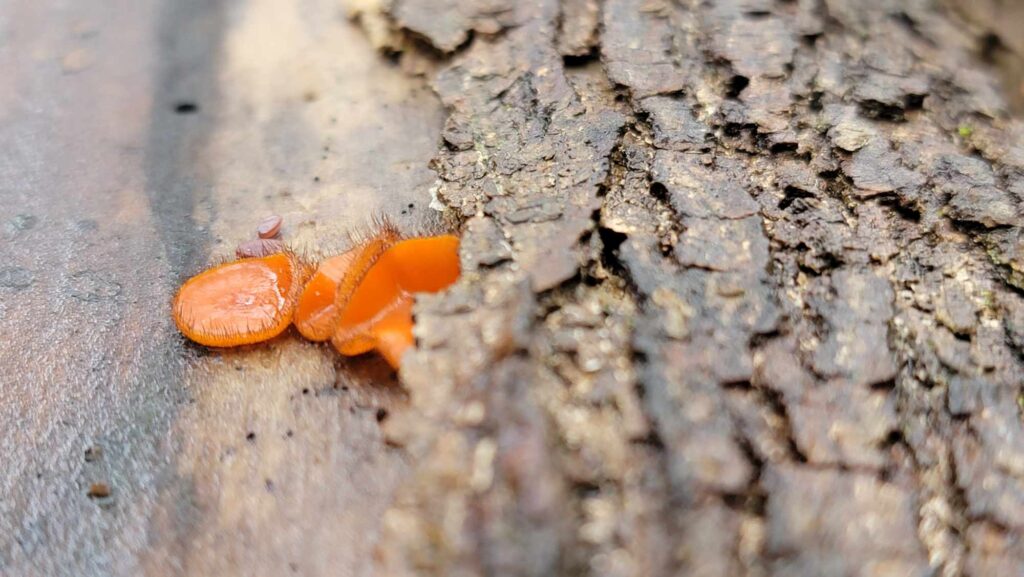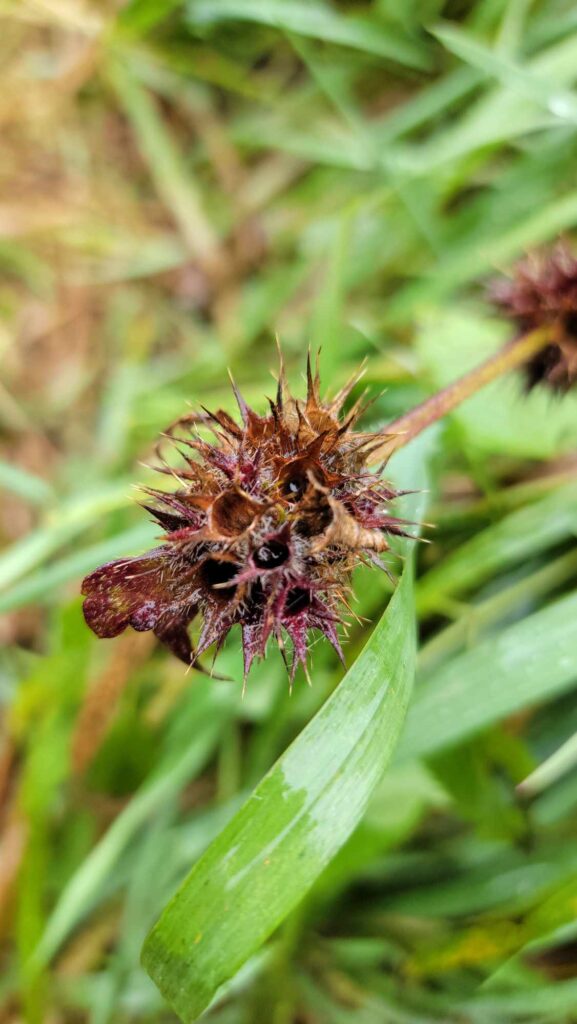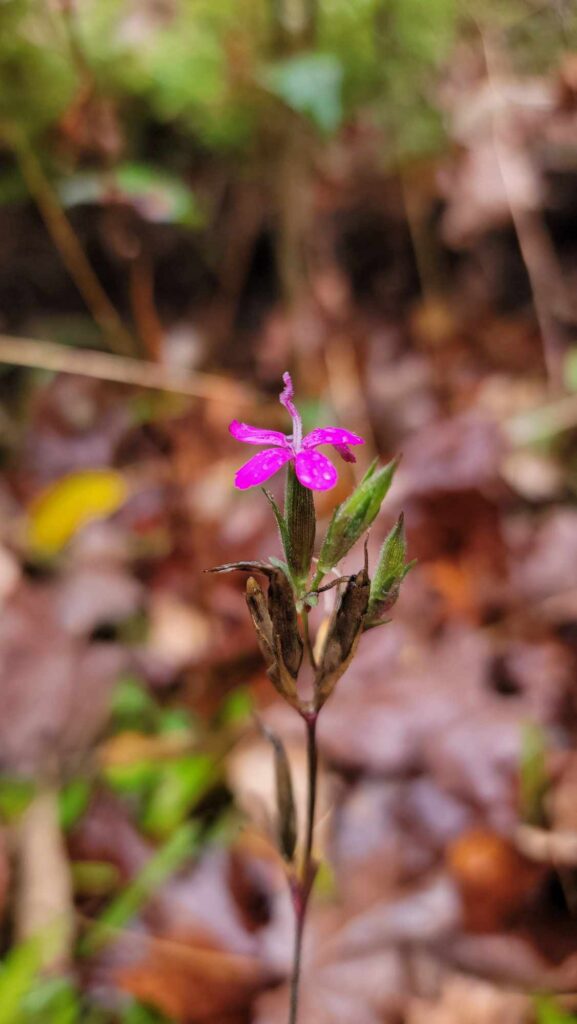Five hearty adventurers did a walk of the Sweetwater Farm Nature Reserve on a rainy Sunday in October.
Thanks to their collective knowledge and use of the app Seek by iNaturalist, they were able to identify a number of trees and plants. Here is our list in no particular order:
- Black Cherry Tree
- Meadowrue
- Biting Stonecrop
- Deptford Pink
- Torrey’s Rush
- White Turtlehead
- Herb Robert
- Common Yarrow
- White Baneberry
- Opossum (unfortunately dead)
- Signs of Pileated Woodpecker
- “Perched” Birch
Now known as the Sweetwater Farm Nature Reserve, this property is in Anishinaabeg territory and was protected by The Couchiching Conservancy in 2019. John Pitts and Kathleen Milligan were the previous caretakers of the land which is located at the southern extent of the Black River Wildlands corridor, identified in our most recent acquisition strategy as high priority for protection. It has 25 vegetation communities and a highly vulnerable aquifer provides significant cold water recharge. https://couchichingconserv.ca/what-we-do/properties/sweetwater-nature-reserve/The property has an active quarry to the south west and buffers a large wetland connected to the Head River.






More about the Eyelash Cup Fungi from https://www.first-nature.com/fungi/scutellinia-scutellata.php
Taxonomic history
Common Eyelash Scutellinia scutellata was described by Carl Linnaeus in his Species Plantarum of 1753, when he named it Peziza scutellata. This tiny but spectacular cup fungus was given its present name in 1887 by the Belgian mycologist Jean Baptiste Emil Lambotte (1832 – 1905).
Scutellinia scutellata is the type species of its genus.
Etymology
The specific epitet scutellata is Latin and means ‘like a small shield’, which seems quite accurate except for the fringe of eyelashes, which I have never yet seen on any shield other than one intended for covering the eyes… The common name needs no explanation, but in some English-speaking countries alternatives such as Eyelash Cup, Molly Eye-winker, and Eyelash Pixie Cup are used instead.
The key to identifying to species level the various species of Scutellinia and Cheilymenia (the other main group of eyelash-fringed disc fungi) of which there are close on 50 known in Britain and Ireland, is by microscopic examination of asci, spores and any hairs or ‘lashes’ that cover the infertile surface.

